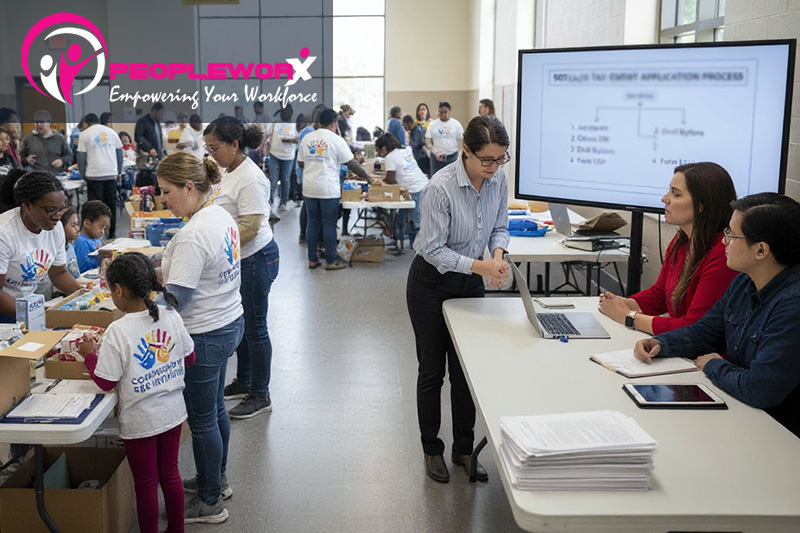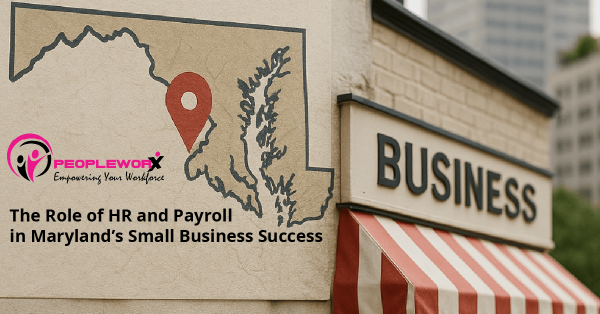Nonprofit Grant Compliance & Labor Allocation: How to Stay Audit-Ready
Running a nonprofit is more than fulfilling a mission—it’s also about managing people, payroll, and funding with precision. When your programs rely on multiple grants, accurate labor allocation and grant compliance aren’t just best practices—they’re essential for transparency, donor trust, and long-term sustainability.
At PeopleWorX, we work with nonprofit organizations every day that face one of the toughest challenges in workforce management: ensuring every labor dollar is allocated correctly across funding sources while remaining compliant with state and federal regulations.
Content
- Nonprofit Grant Compliance & Labor Allocation: How to Stay Audit-Ready
- Why Labor Allocation Matters for Nonprofit Grant Compliance
- The Risks of Noncompliance
- How PeopleWorX Simplifies Grant Compliance for Nonprofits
- Real-World Impact: A Nonprofit Success Story
- Best Practices for Grant Compliance and Labor Allocation
- Frequently Asked Questions (FAQ)

Why Labor Allocation Matters for Nonprofit Grant Compliance
For many nonprofits, employees work across multiple grants or programs. For example, a case manager may split their time between two grants—each requiring precise documentation. Without a reliable system for time tracking and labor allocation, this can quickly lead to compliance issues during audits.
Accurate labor allocation ensures:
- Grant funds are used appropriately and align with the intended purpose.
- Payroll records match grant budgets, creating clear audit trails.
- Reporting is faster and cleaner, supporting transparency with funders and regulators.
Organizations that rely on manual timesheets or spreadsheets often face inconsistencies, missed allocations, and reporting errors. That’s why automating these processes through an integrated payroll and HR system is so critical.
The Risks of Noncompliance
According to the National Council of Nonprofits, mismanagement of grant funds, especially payroll allocations—is one of the most common reasons nonprofits face audit findings or risk losing funding.
Even small errors, like miscoded labor hours or missing documentation, can:
- Trigger repayment of funds or withheld reimbursements
- Lead to reputational damage
- Delay future grant approvals
- Increase administrative burden for leadership teams
Staying compliant means investing in systems and support that reduce those risks before they become crises.
How PeopleWorX Simplifies Grant Compliance for Nonprofits
At PeopleWorX, we bring together technology + human support to help nonprofits like Community Living, Inc. streamline compliance and payroll accuracy.
1. Automated Labor Allocation
Our system tracks every employee’s time and automatically allocates hours by grant or client ID. This eliminates manual data entry and ensures payroll and general ledger reports always align.
2. Seamless General Ledger Integration
PeopleWorX connects payroll and timekeeping directly to your accounting system, providing clean data for audits, financial reviews, and state reporting.
3. Real-Time Compliance Insights
Get visibility into funding usage, labor costs, and allocation trends, so leadership can make proactive decisions before issues arise.
4. Dedicated Account Support
Unlike large providers, you’ll always work with a dedicated representative who understands your nonprofit’s structure, reporting requirements, and mission. No call centers, just real people who care about your success.
Real-World Impact: A Nonprofit Success Story
Community Living, Inc. (CLI), a Maryland-based nonprofit serving adults with developmental disabilities, faced complex payroll and compliance needs.
By implementing PeopleWorX payroll, timekeeping, and GL integration, CLI achieved:
- Accurate client-by-client labor tracking
- Smooth monthly state audits
- Simplified bonus management for retention
- Personalized support from a dedicated payroll expert
Read the full story → Community Living, Inc. Case Study

Best Practices for Grant Compliance and Labor Allocation
To maintain accuracy and compliance, every nonprofit should:
- Define clear allocation rules for each grant before work begins.
- Use an integrated payroll and timekeeping system that automates reporting.
- Document policies and retain all supporting documentation for audits.
- Train staff regularly on time entry and allocation processes.
- Partner with experts who understand nonprofit payroll compliance.
Learn more about PeopleWorX Payroll Solutions for Nonprofits.
Frequently Asked Questions (FAQ)
How does labor allocation affect grant compliance?
Labor allocation ensures that each employee’s time and wages are charged correctly to the appropriate grant or program. It’s the foundation of financial transparency and audit readiness.
What happens if my nonprofit misallocates labor costs?
Incorrect allocations can lead to grant repayment demands, loss of funding, and compliance violations. Accurate timekeeping and reporting prevent these issues.
Can small nonprofits afford automated payroll systems?
Yes! PeopleWorX offers scalable payroll and HR technology designed specifically for small and midsize nonprofits, with flexible pricing and expert support.
What makes PeopleWorX different from other payroll providers?
We combine modern payroll and HR technology with dedicated, human support—no ticket queues, just direct access to an expert who knows your nonprofit’s structure and goals.
Ready to Simplify Your Nonprofit’s Compliance?
Let’s make grant compliance and payroll easier—so your team can stay focused on what truly matters: your mission.
👉 Explore Nonprofit Payroll Solutions






